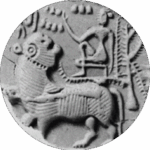Children from Tulkarm, and a birthday party
This morning went to take pictures of the art workshop for the kids from Tulkarm – most of them are from the refugee camp. They arrived yesterday, and their main activity was to create some paintings, together with children from the WAS-NS school.
Roos, A woman from the Dutch Embassy, which sponsored the project, came along. As we watched the children painting, I asked Roos if she thought these could be Dutch children. She said “sure!” I remarked that the children in our region are known to be cheeky and undisciplined, but she said this was true also of Holland. Anyway, as we talked the children were fairly quiet and focussed on their work.
Children are children everywhere. It was hard sometimes to see which were the refugee kids and which were ordinary pupils at our school. But we know that the Tulkarm children come from very difficult conditions – the overcrowding and poverty of the refugee camp. Tulkarm is virtually a prison, blocked off by the separation barrier and army checkpoints. Although the children live close to the sea, they have never visited it, and for most of them this was their first trip beyond the narrow confines of military occupation. Some of their paintings showed explosions and people being shot and killed by the army. The military vehicles they drew were not the stereotyped tanks such as any child might draw, but armored personnel carriers, which they had obviously seen themselves.
In the afternoon, they visited the swimming pool. None of them can swim, but they had lots of fun in the water. One girl said she wanted to stay and go to our school. And that leads to the inevitable question about whether it is kindness or cruelty to take these children out for a day.
In the evening we went to Ruti’s birthday party. I sat next to Rabiah, an Arab woman who works at the hotel. She has a similar diet to me: vegetarian, with a dislike for garlic and eggs – basically a yoga diet, though she came to it naturally.
Having left her husband, Rabiah raises her three children alone. The youngest in high school, though Rabiah herself is quite young, having married early. During the meal the conversation turned to Hezzie’s surprise at meeting one of his former pupils, who is already married and pregnant, at the age of 15. Rabiah explained that in the village in which this girl lives it is the custom to marry young, illegal though it might be. They get the qadi to marry them, then wait for a few years to register the marriage with the civil authorities. In the adjoining village, where Rabiah lives, the attitude is different – with men and women often waiting until their late 20s before getting married.
Another subject of conversation was an Israeli-Palestinian encounter workshop that Norit had suffered through. She had found herself in a situation where her views diverged widely from those of the other Jewish participants. These were mostly moderate leftists, who weighted every statement in favour of peace and justice with strong “buts”, as Norit put it. She mentioned a former soldier who had talked about patrolling the streets of Hebron. He said that despite his armour and weaponry, he had felt more scared and confused than the Palestinians around him.
Norit said that she had an easier time with determined right-wingers than with these leftists. By agreeing with many of the statements of the Palestinians about Israel and the occupation, she managed both to alienate the Jewish participants and to irritate the Palestinians, who wanted someone they could argue with.
Norit said that the most memorable statements for her had been those of a Palestinian participant who, like her, was regarded as a traitor by his own group. He had praised a mukhtar of an Arab village who, in the 1948 war, had chosen to surrender to the Jewish side. As a result, the village had been spared, and is still there today, whereas otherwise it would have been wiped out and its citizens killed or forced into exile. “Sometimes the bravest decision is to surrender,” she said.
